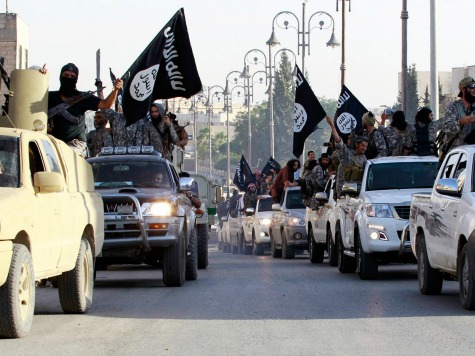Many Americans think of war as a great national struggle, as was the case during WWII, where violence rose to the belligerents’ objectives. These were “total” wars between nation-states driven by incompatible political ideologies supported by the mobilization of industrial-age economies.
For the United States and its allies, the objective was unconditional surrender. Most wars, however, have been between states of unequal strength, and outcomes do not always favor the side with the larger battalions–the American Revolution and French and American wars in Indochina being prime examples. As legendary football coach Paul “Bear” Bryant once observed, “It’s not the size of the dog in the fight but the size of the fight in the dog that matters.” Regardless of the size of the dogs in the fight, all wars are characterized by primordial violence, enmity, and hatred.
Nearly two centuries ago, Prussian military theorist Carl von Clausewitz posited violence, enmity, and hatred as constants pushing warfare to extremes of violence. The object of combat is to destroy enemy forces as a means to achieve a political objective. Clausewitz termed destruction of enemy forces “the first born son of war.”
All wars involve some level of violence where combat fosters and intensifies enmity. Hatred, however, goes beyond enmity and invariably escalates as fighting continues. The more intent one side is upon destroying the enemy’s forces, the greater the efforts involved and the greater the danger will be if the enemy is not subdued quickly. War is the most volatile of human endeavors, which, once embarked upon, is subject to increased passions.
The Obama administration’s air power-centric strategy currently underway in the Middle East may degrade the fighting capabilities of ISIS, but it cannot destroy ISIS armies or break their will. For nearly a century, air power combined with artillery provided the prelude to attack by ground forces to engage and destroy enemy forces with the objective of controlling territory. Military advisors and forward air guides can help achieve that objective, but they are no substitute for infantry backed by armor to find, fix, and annihilate opposing forces. Consider a nation that abdicates the use of ground forces and proceeds with a minimal air campaign that measures success by bomb-damage assessments: that is what Clausewitz termed “war by algebra.”
The tactical success of ISIS rests on exploiting the lack of leadership and cohesion in the poorly led and unmotivated Iraqi army and the lack of heavy weapons among the better led, more determined Kurds. Neither the Iraqis nor the Kurds can stop ISIS forces inspired by sectarian religious hatred. The size of the fight in the ISIS dog inspired by sectarian and religious hatred is too large. Unless U.S. ground forces intervene, substantial help from a vague coalition of Arab partners is unlikely.
Most Arab armies, while equipped with sophisticated military hardware thanks to petro-dollars, exist to keep their respective tyrannical regimes in power. These glorified national police forces do not possess the power-projection capabilities required for a sustained campaign beyond their respective borders. The Turks and Egyptians come closest in capabilities but they are subject to internal political pressures militating against the kind of commitment needed to destroy ISIS.
Recently, U.S. Department of State spokesperson Jen Psaki, commenting on what might have transpired in Iraq had aresidual American military force remained, stated it was unlikely a force of 10,000 U.S. troops could accomplish what 175,000 Iraqi soldiers could not. Her remarks reflect naiveté and ignorance of military matters. While fanatical and cruel, ISIS would be outclassed and out-gunned by U.S. troops supported by air power, especially in the relatively open deserts of Iraq and Syria.
The nature of war is such that half-measures, while unlikely to succeed, are almost certain to encourage the enemy to bolder aggression. So far, the present air-power strategy has not deterred ISIS from expanding territory under its control, a prime example being the recent siege of Kobani, a town in northern Syria along the Turkish border.
Additionally, ISIS propaganda uses Internet videos of American bombings to depict a cruel technology being unleashed on innocent civilians as a recruiting tool across a vast uninformed Arab populace inclined to hate Americans. There is no nice way to make war. In this case, air attacks absent a coordinated ground campaign cannot succeed and may do more harm than good.
War is a serious endeavor eluding quantifiable figures of destroyed or damaged targets. Violence is the means for breaking the enemy’s will and nothing does that like devastating opposing armies. It takes land forces to do that effectively and then consolidate and hold territorial gains.
The Islamic State in Iraq and Syria kidnapped several Americans, murdering two so far. It commits war crime atrocities as a tactic to destroy its opponents’ will. ISIS has threatened terror upon the U.S. and its allies. Sporadic airstrikes seemingly unrelated to a strategic goal are useless and potentially counter-productive. The administration must either fight this war to win or admit the Middle East is no longer within the purview of U.S. national security interests. Fighting to win means committing ground forces. Above all, the president as commander-in-chief must lead.
Dr. Earl Tilford is a retired professor of history at Grove City College. Previously he served as Director of Research at the Strategic Studies Institute, at the US Army War College. From 1969 to 1990, he served as an Air Force intelligence officer with tours in Vietnam and at Strategic Air Command, where he was a nuclear targeting specialist.

COMMENTS
Please let us know if you're having issues with commenting.